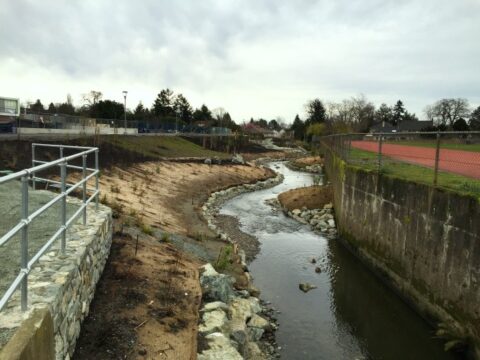
By OB H
In 2015, Oak Bay High School and the Greater Victoria Green team rebuilt the creek channel, adding in native vegetation along the creek bank. The collaboration also included building an outdoor classroom space and trail to use.
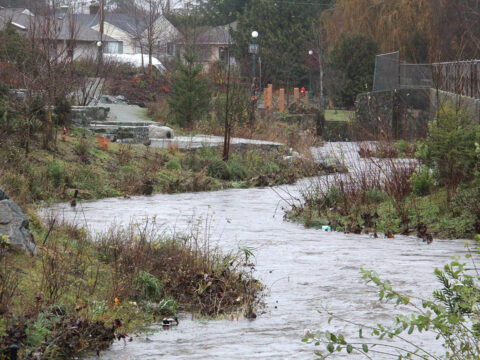
By OB H
Floods have been infrequent and limited to certain locations. Flooding at Trent Street due to heavy rainfall threatens numerous buildings surrounding St. Patricks School. The flooding problem in Bowker Creek spans three municipalities and remediation efforts prove to be expensive. To combat the flooding issue, the creek channel was dug out, straightened and enclosed in pipes to increase drainage and lessen the risk of flooding in surrounding areas.
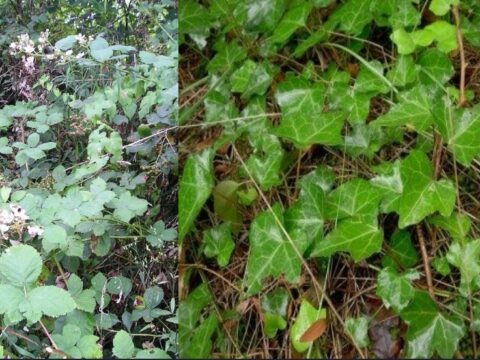
By OB H
Invasive species in Bowker Creek pose a threat to the native species as they tend to out compete them, which puts the biodiversity of the ecosystem at risk. Two common invasive species in Bowker Creek include the Himalayan blackberry (Rubus discolour) and English ivy (Hedera helix). These two species are both known for their ability to spread and form thick, inaccessible thickets. Both of these species can limit the growth of native species and decreases overall biodiversity.

By OB H
These ducks congregate near the end of Bowker Creek everyday!
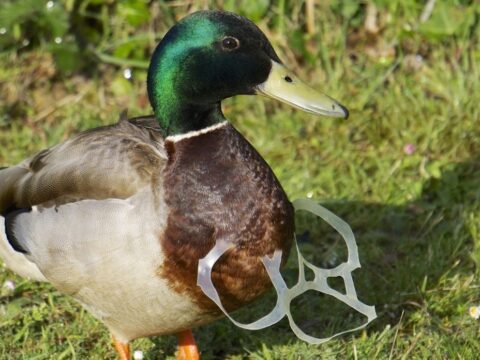
By OB H
Ducks are very abundant in Bowker Creek. Because it is so close to a high school, it is inevitable that plastic litter from students will enter the creek. This can have detrimental effects on the ducks. The birds mistake the plastic debris as food, which can lead to indigestion and death. According to the Monterey Bay Aquarium, one study found that 97.5% of chicks had plastic in their stomachs. Plastic found inside birds includes bottle caps, bags, and other litter. The effects of ducks ingesting plastic haven't been scientifically proven, but it’s believed that it injures or kills the birds by cutting their stomachs. It is also thought that the plastic can take up space in their stomachs, causing them to feel “full” when they aren’t.
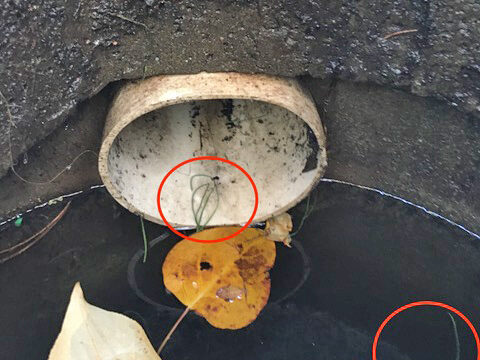
By OB H
On November 18th, residents of Oak Bay reported seeing thin green and white pieces of plastic strands in Bowker Creek, storm drains and on the sidewalks. It was later discovered that the strands were from the outdoor soccer turf at Oak Bay high. This is particularly worrisome as Bowker Creek connects to the Salish sea, where the strands could be entering. The turf has been shedding an alarming amount of plastic into the environment, which has caught the attention of the Greater Victoria School District, who has indefinitely closed the field as of now.
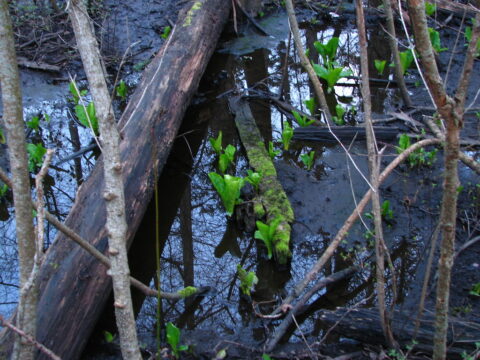
By OB H
Bowker Creek is roughly 8 kilometres long and starts at the University of Victoria campus. The freshwater creek continues flowing south, eventually reaching Oak Bay.
The creek was named after John Sylvester Bowker, an American settler who came to the area in the 1860s. Historically, Bowker creek was home to many fish like chum and coho salmon. First Nations communities relied on the creek as a source of food and fresh water.
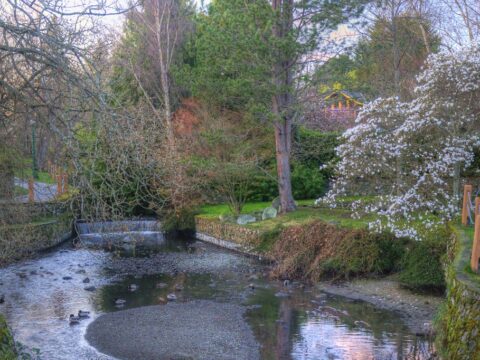
By OB H
The issues surrounding Bowker Creek such as plastic entering the creek and the water quality, among other things, have significant impacts on life in the creek. With great efforts, we can reduce the amount of litter in the creek and improve overall water quality. This will create a better environment for not only the students using the learning space, but the entire ecosystem of the creek.
